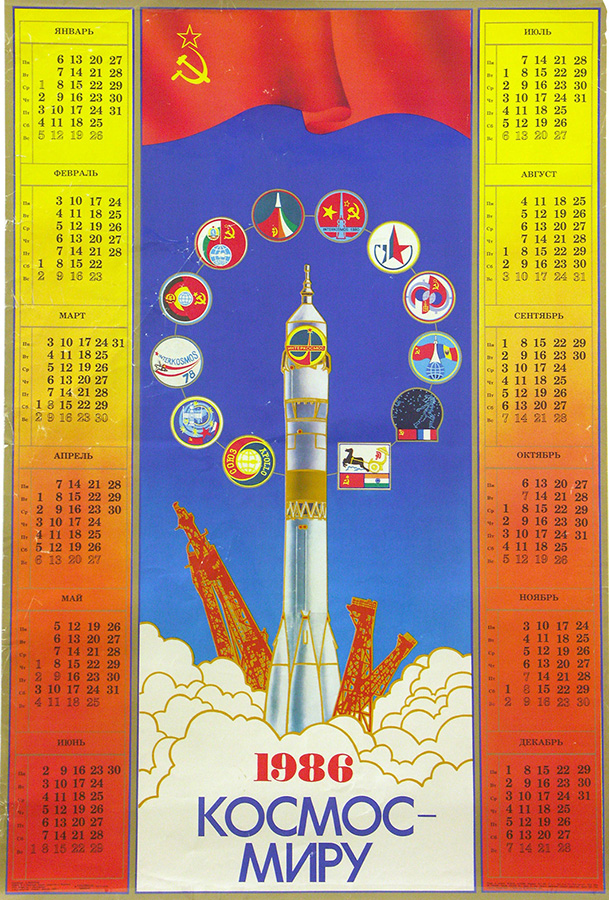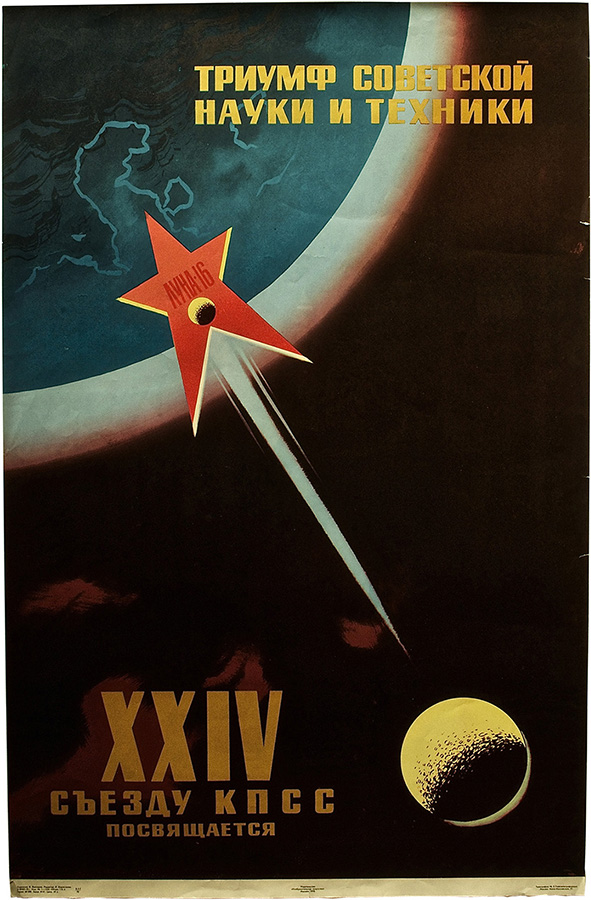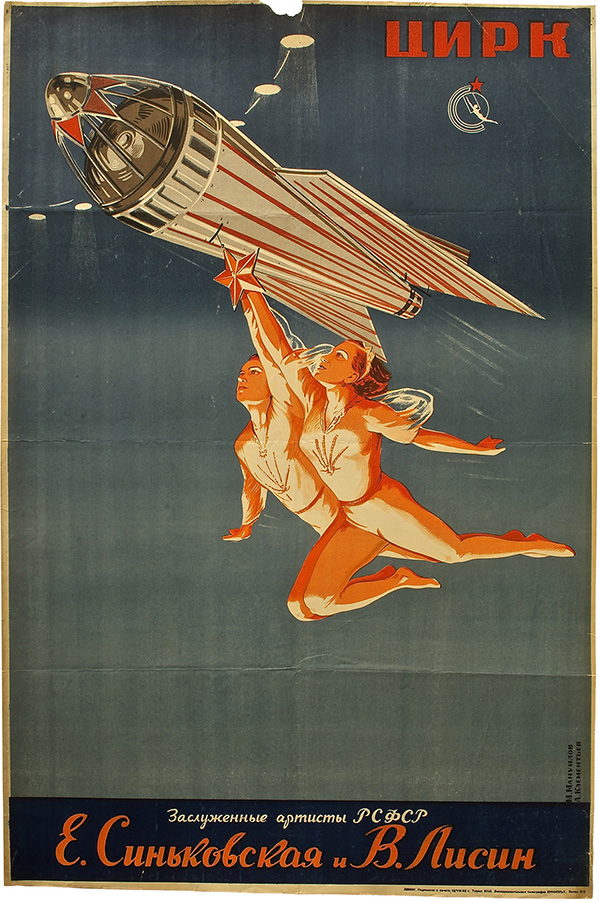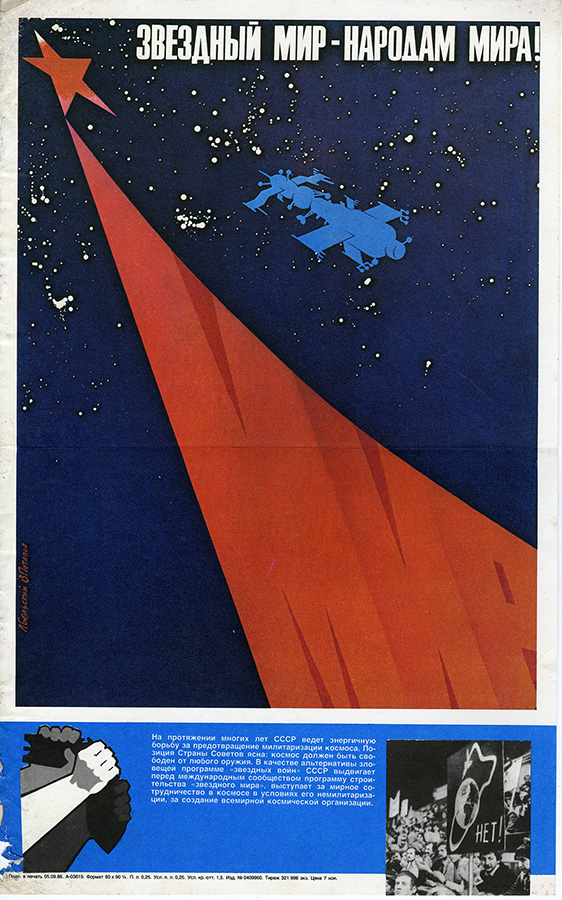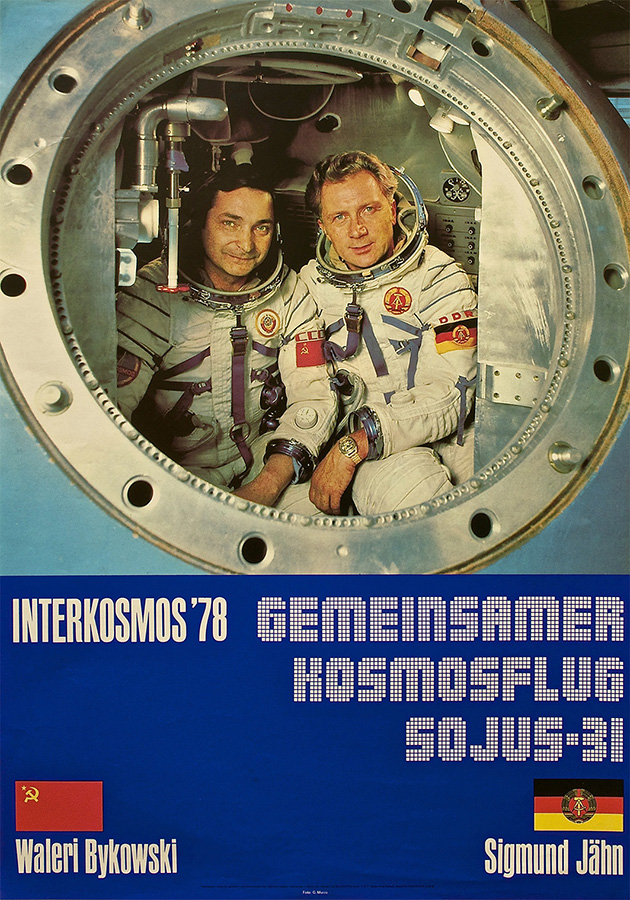Red Space: Promoting a Socialist Destiny
Justin Jampol
The tenets of Marxism-Leninism pointed the way to a glorious future on earth and in outer space. Lenin told the British science fiction writer H.G. Wells, who interviewed him at the Kremlin in 1920, that if life were discovered on other planets, revolutionary violence would no longer be necessary: ‘If we succeed in making contact with the other planets, all our philosophical, social and moral ideas will have to be revised, and in this event these potentialities will become limitless and will put an end to violence as a necessary means of progress.’
Technology and modernization campaigns were the tools for reaching this destination. With Soviet cosmonauts (‘navigators of the universe’) in the East and American astronauts (‘navigators of the stars’) in the West, the space race mirrored the arms race. The Soviets struck first with the successful launch of the Sputnik satellite in 1957, followed soon after by Yuri Gagarin’s mission into space.
The achievements of the space program in the USSR came at a great cost, and the realities back on earth were relatively grim. But the underlying philosophy of Soviet communism compensated for this by promising a future that would justify sacrifice. What has become known as ‘propaganda’ was simply the visual and textual promotion of what will be rather than what was.
From the early days of the USSR, when most of the population was illiterate, posters, along with film, were powerful tools for creating a common understanding – and adherence to – the authorities’ goals. The best – and most loyal – graphic artists and designers were engaged to create a new visual vocabulary. Space posters, a subgenre of political posters, are some of the most visually stunning representations of the promises of the Soviet state – promises that ended in decades of stagnation and, ultimately, economic and political collapse.
These remnants of a former era, when a Soviet life in space seemed all but predestined, now reside in the Wende Museum in Los Angeles, a center for research and scholarship on the subject of visual and material culture of the Soviet Bloc.

